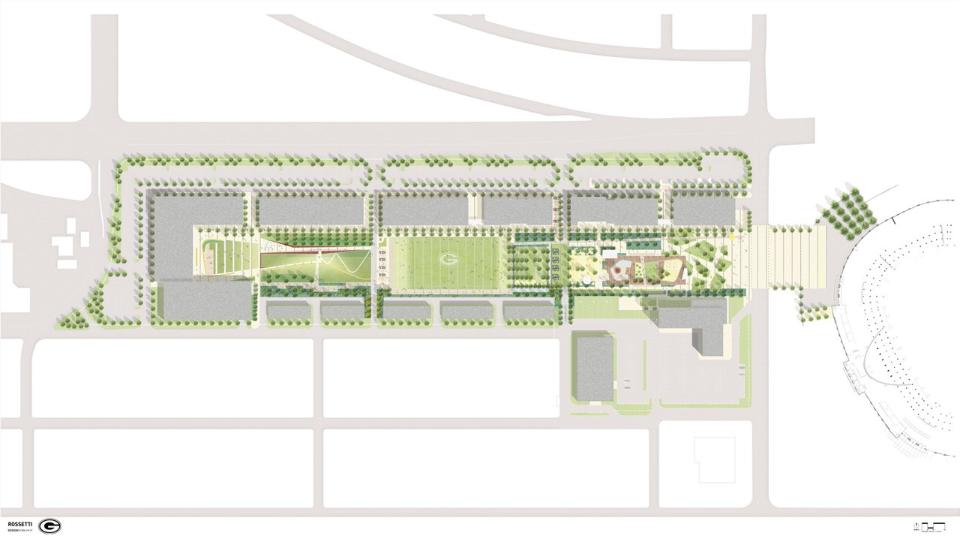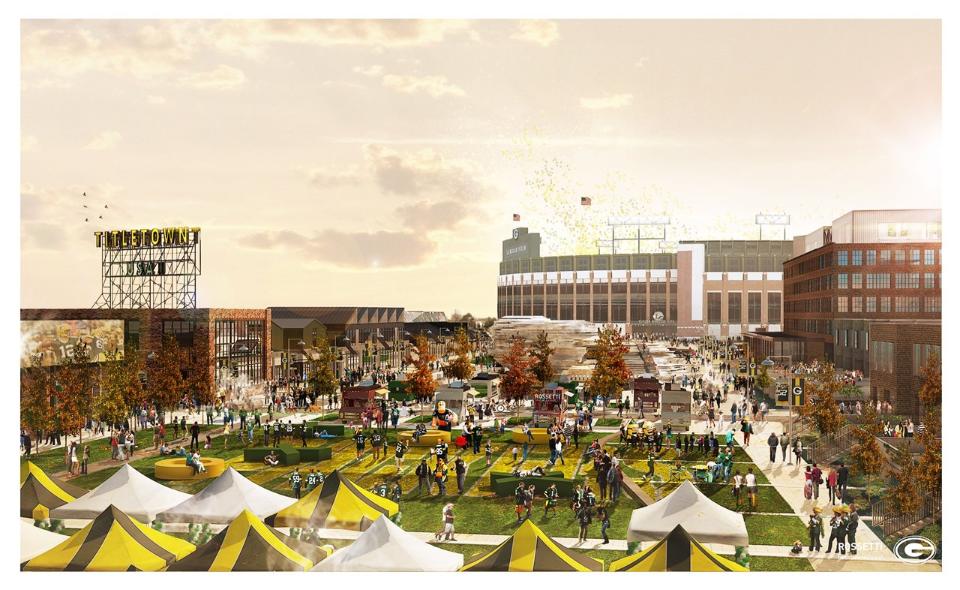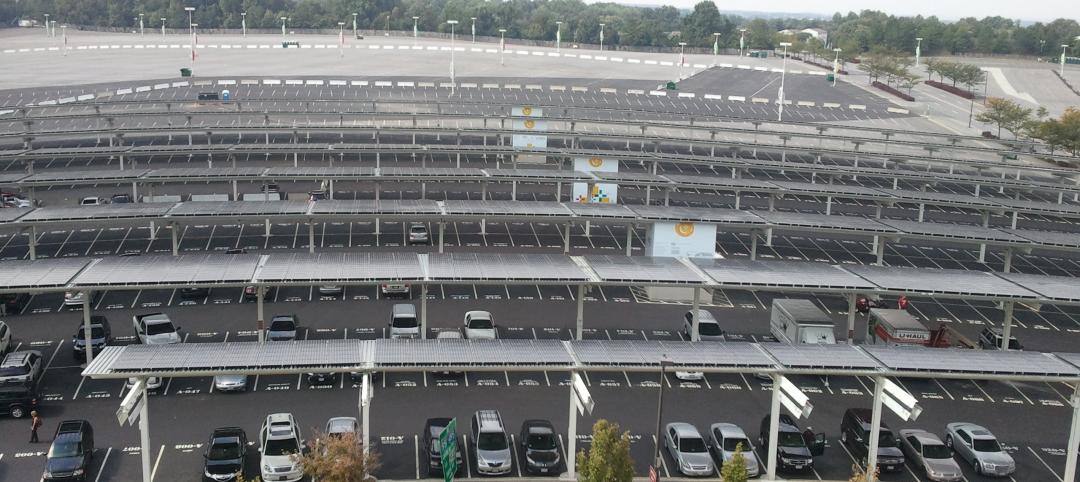This fall, the Green Bay Packers will break ground on Titletown District, a mixed-use development west of the NFL team's home of Lambeau Field. When completed in the fall of 2017, the first phase of Titletown District will include a hotel, a sports medicine center, a restaurant/brewery, and a 10-acre public plaza.
The Milwaukee Business Journal reports that the first phase of this project is expected to cost between $120 million and $130 million, with the Packers contributing $65 million of that total.
For several years, the Wisconsin-based team has been acquiring land in town and demolishing buildings in preparation for starting Titletown District. The first tenant, a 100,000-sf Cabela’s sporting goods outlet the retailer developed with the team, opened in July 2014 and drew 2.8 million visitors in its first 12 months in business.
The Journal reports that this fall the Packers and its Building Team—which includes Sterling Project Development, a New York real estate advisory firm; Rossetti, a Detroit architectural design and planning firm; and Biederman Redevelopment Ventures, a New York design consultant with expertise in public-spaces and streetscapes—will begin installing infrastructure on eight of the project’s 20 acres for initial tenants that will include a five-story, 150-room, four-diamond hotel to be call Lodge Kohler, which the bath and kitchen fixture supplier Kohler Co. will build and operate.
The hotel will not only provide rooms for fans attending Packers’ games, but should also benefit from the 700 events the team conducts annually.
Other initial tenants will include a 20,000-sf Hinterland restaurant/brewery; and a 30,000-sf sports medicine facility called Bellin Health, which will feature lab, X-ray, and MRI services. The Packers’ team physician Dr. Patrick McKenzie will staff the clinic.
The publicly owned Packers reported $375 million in revenue for fiscal year 2015, up 16%. Team president Mark Murphy said the franchise continues to acquire land with an eye toward further regional economic development that could include residential buildings.


Related Stories
| Sep 30, 2011
Design your own floor program
Program allows users to choose from a variety of flooring and line accent colors to create unique floor designs to complement any athletic facility.
| Sep 16, 2011
Largest solar installation completed at Redskins' football stadium
On game days, solar power can provide up to 20% of FedExField’s power.
| Sep 12, 2011
First phase of plan to revitalize Florida's Hialeah Park announced
This is the first project of a master plan developed to revive the historic racetrack.
| May 25, 2011
Olympic site spurs green building movement in UK
London's environmentally friendly 2012 Olympic venues are fuelling a green building movement in Britain.
| Apr 11, 2011
Wind turbines to generate power for new UNT football stadium
The University of North Texas has received a $2 million grant from the State Energy Conservation Office to install three wind turbines that will feed the electrical grid and provide power to UNT’s new football stadium.
| Apr 5, 2011
U.S. sports industry leads charge in meeting environmental challenges
The U.S. sports industry generates $414 billion annually. The amount of energy being consumed is not often thought of by fans when heading to the stadium or ballpark, but these stadiums, parks, and arenas use massive quantities of energy. Now sports leagues in North America are making a play to curb the waste and score environmental gains.
| Mar 25, 2011
Qatar World Cup may feature carbon-fiber ‘clouds’
Engineers at Qatar University’s Department of Mechanical and Industrial Engineering are busy developing what they believe could act as artificial “clouds,” man-made saucer-type structures suspended over a given soccer stadium, working to shield tens of thousands of spectators from suffocating summer temperatures that regularly top 115 degrees Fahrenheit.
| Mar 11, 2011
University of Oregon scores with new $227 million basketball arena
The University of Oregon’s Matthew Knight Arena opened January 13 with a men’s basketball game against USC where the Ducks beat the Trojans, 68-62. The $227 million arena, which replaces the school’s 84-year-old McArthur Court, has a seating bowl pitched at 36 degrees to replicate the close-to-the-action feel of the smaller arena it replaced, although this new one accommodates 12,364 fans.














